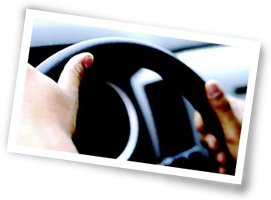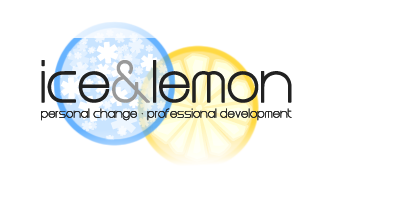Get Active..!
IN SHORT: Take an active role in living your life – it’s the only way it can be the way you want it to be!
“Who finds hidden treasure?
Some of those who seek it,
And none of those who don’t.”
[Anon]“The difference between great people and everyone else is that great people create their lives actively, while everyone else is created by their lives, passively waiting to see where life takes them next. The difference between the two is the difference between living fully and just existing.”
[Michael Gerber, US author]
[1064 words, estimated reading time 6-9 mins]
(NOTE: This is a re-publication of an article I wrote four years ago, so it’ll be a reminder to some of you, and new to others. With it I’m sharing, free of charge, a process that many of my one-to-one clients have found useful – I hope you do too.)
To avoid any confusion, the first thing I need to explain is what I mean by ‘Active Living‘. I’m NOT talking about getting regular exercise, going to the gym, not spending hours in front of the TV, cycling instead of driving, using the stairs instead of the lift etc., although those are all great things.
What I am talking about is an attitude that I’d like to introduce you to by first talking about the early work of Martin Seligman, a psychologist that I’ve mentioned in previous articles.
In a series of studies in the 1960s and 70s (that would probably be ethically tricky these days) he and his colleagues put animals and people in situations where something distracting or painful occurred repeatedly and randomly and, importantly, over which they had no control, i.e. they couldn’t stop it or escape it but instead had to wait it out until it stopped.
They repeated this quite a few times, and then changed the situation so that the subjects COULD stop the distraction or pain, or escape it in some way, for example by moving to a different part of the room or enclosure, or hitting a switch, sometimes a new one, and sometimes one that previously didn’t work.
What they discovered was that around two-thirds of the subjects defined their current situation wholly by their past experience of not being able to change things, and so even when they could control what was happening or escape it, they didn’t bother. This phenomenon is now referred to as ‘Learned Helplessness’.
However, the remaining one-third DID use their new powers of control or escape to get away from the pain or distraction, and a proportion of them even continued to seek a means of control or escape when none seemed available.
The first two-thirds essentially became PASSIVE in their situations, accepting what was happening as their lot and not trying to change things at all, even when they could.
However, the other third remained ACTIVE, always seeking ways to change their lot when it wasn’t pleasant.
Seligman and his colleagues then decided to find out whether the passive two-thirds could un-learn their helplessness, and happily found that they can, with time and training, and become more and more active.
We can extend these concepts to life in general, in which we can decide whether our mode of existing is Passive Living or Active Living.
Passive Living is, at its most basic, living a life from day to day waiting for things to happen to you, those things you wish for, long for, or just hope for – a better job, a better relationship, time to yourself, or waiting for the bad things that are in your life to somehow end or go away of their own accord.
Essentially, passive living is about waiting for opportunities to present themselves to you – waiting for someone to offer you that job you really want, waiting for that special someone to come into your life, waiting until things calm down a bit or life isn’t so busy so you have some time to relax. At its worst, passive living might even have you not notice when these things do come along, so they pass you by unnoticed and untaken. And even at its least detrimental, passive living still tends to mean that you only take action when things have become really bad, and then it’s usually only just enough to return things to the same old status quo.
Passive living can also be linked to an unwavering belief in fate or destiny, that your life has a path that must be inevitably followed, no matter what your choices, and that whatever happens in life was meant to happen that way.
Active Living, on the other hand, is a mode of existing where you decide what it is you actually do want and, without waiting for it to come to you, you set about making it happen. If you want a fulfilling relationship, you take the opportunities offered to socialise, go on dates, join a group or society of people interested in the same activities or hobbies as you (or even form one!). If you want a new job, the active mindset says that you look through the job ads in the relevant places, you keep your CV up to date and your interview skills polished, you network and ask around through personal and business contacts. And if you’re in need of some time to yourself, those with an active mode of living plan for it, taking a day here and there to relax, planning holidays in advance, understanding that you perform at your best when you do make regular time for yourself.
The active life is one lived with a belief that my choices create and change my ‘fate; – that my destiny is in my own hands and that opportunities are largely made rather than stumbled upon.
Active behaviour was shown by some prisoners of war in WW2 who, despite repeated recapture, continued to try to escape, whilst others just accepted their lot. It’s seen in patients with debilitating conditions who, despite setbacks or pain, continue to push themselves forward. It’s evidenced in the lives of political and social activists who push for change, who protest, lobby and keep going until something happens. It’s even seen in some of the most successful business people who, despite losing fortunes with one venture, start another one that’s even more successful than the last rather than playing it safe.
Passive behaviour is all too prevalent in many sections of society, especially at lower income levels, who decide not to work hard, get an education, improve their own circumstances and even try to stop others from doing the same, accusing them of ‘forgetting their roots’ or ‘trying to be better than everyone else’.
But passive living is also seen in areas of our own lives, personal and professional, even when we might be really active in others.
So, on that note, to this month’s challenge. However, it’s a little more in-depth than previous months and you’ll need to download it from here:
Take an active role in living your life or someone else will make your choices for you, decide what’s best for you and have you live it their way, which is usually only what’s easiest and best for them.
Your life is in your hands – do something with it!
![]()


